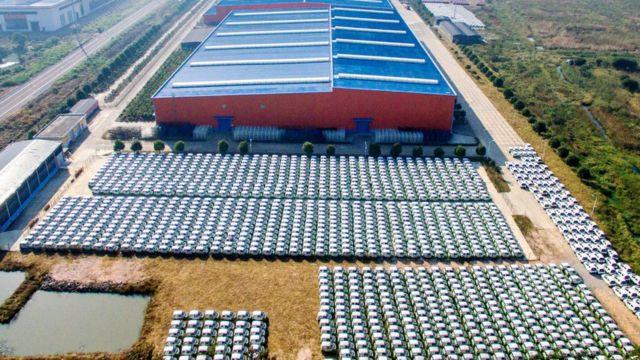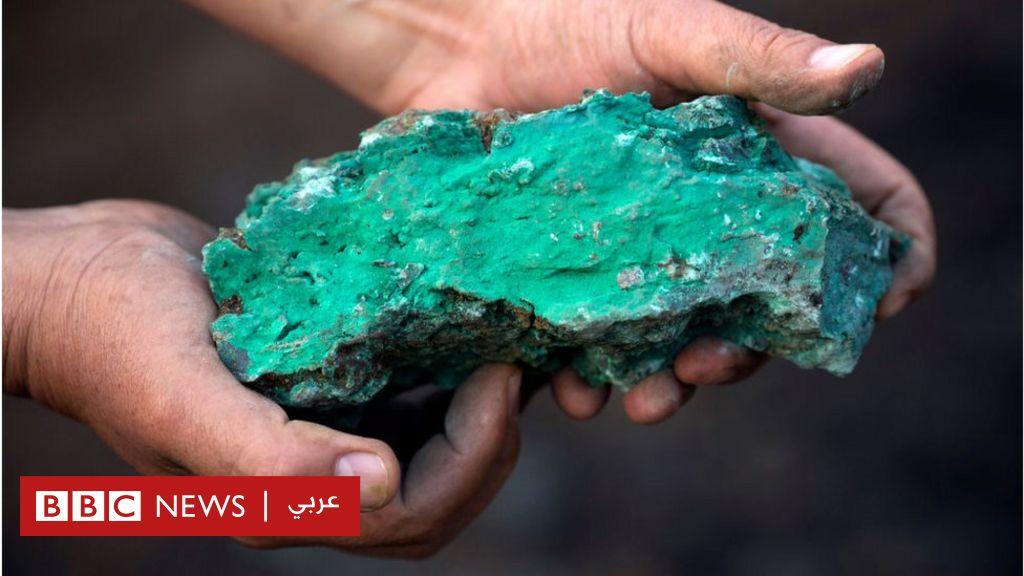Cobalt is one of the most prominent minerals that define our contemporary world, due to its frequent use in its advanced industries.
Throughout history, cobalt has been used to color glass and ceramics. The ancient Egyptians used cobalt compounds 2,600 years ago in their sculptures.
In the twentieth century, it was discovered that cobalt had properties that became essential for most advanced technologies.
When cobalt is mixed with other metals, it forms a very hard alloy that is resistant to corrosion and remains stable and does not disintegrate under high temperatures.
Therefore, such alloys are used in the manufacture of aircraft engines, missiles, nuclear power plants, turbines, cutting machines and even in artificial hip joints.
All of these uses have made this metal valuable, but what has made it even more valuable and important to investors is its use to make negative electrodes for rechargeable batteries.
So it is not surprising that investors call this metal "blue gold".
Since 2008, the demand for rechargeable batteries has increased at a very rapid pace with the increasing popularity and widespread use of smartphones.
Four years later, the spread of electric cars dominated the imagination and future plans of cobalt traffickers.
Cobalt prices rose between 2016 and 2018 from 26 thousand dollars per ton to reach 90 thousand dollars.
More than 50 percent of all cobalt demand is used to make batteries. Both the European Union and the United States classify cobalt as an essential raw material.
Surprisingly, however, prices for this metal have collapsed in the past year.
Switzerland-based mining company Glencore has announced the closure of the Mutanda cobalt mine, the world's largest and located in the Democratic Republic of the Congo, saying it is "no longer economically viable".
Why did this shift happen, and the cobalt boom waned.
In short, we can say that the cobalt market has been exaggerated. The era of electric cars is about to dawn, but that has not yet been fully realized.
Skip the podcast and keep reading My Teen Podcast (Morahakaty)Teenage taboos, presented by Karima Kouh and prepared by Mais Baqy.
Episodes
podcast end
An industry source said: "Everyone talks about it, but who makes electric cars on a large scale? Tesla, and who else? How many electric car charging points do you see in London?"
The other factor is that many dealers in the trade of this metal, mainly in China and Africa, store it in the hope of obtaining large profits when prices rise.
They began releasing quantities of their storage for sale after investors realized that the demand for electric cars was not as great as they had expected.

However, most analysts who follow the cobalt market say that the basics have not disappeared. This argument is based on the precarious nature of cobalt processing, this element is not found “free” anywhere on earth, but its presence is associated with copper or nickel and must be extracted from them using acids and heat .

More than 60 percent of the world's cobalt imports come from the Democratic Republic of the Congo, which is often described widely as representing to the cobalt market what Saudi Arabia is to the oil market.
But the Democratic Republic of the Congo is not an easy place to do business, according to George Hebel, head of the analysis unit for cobalt and lithium at CRU International.
Although democratic elections were held in the Democratic Republic of the Congo, the first since the country's independence in 1960, the political situation there remains unpredictable.
Hebel says that the Congolese authorities "promised a 10-year freeze on the fees that the government collects from mining companies, but they suddenly raised them from 2.5 percent to 10 percent. And that's a huge increase."
Earlier this year, global risk assessment consultancy Verisk Maplecroft put the Democratic Republic of the Congo at the top of its list of countries where natural resource industries are likely to be nationalised, paralleling Venezuela, which Hebel says "gives you an idea of the extent of the risk." of investing in that country.
Then comes corruption.
Glencore itself is facing an investigation by a US Trade Commission and Justice Department into its operations in countries including the Democratic Republic of Congo.
However, the company's closure of the Mutanda mine means that about 25,000 tons of cobalt will be removed from supply in the market, which will lead to the start of stabilizing prices.
Hebel believes that it will take until the end of this year before this effect appears on the market.
As prices start to rise, another factor influencing the market will be primitive mining that is not linked to the big companies and is carried out by artisans on their own.
Many of the temporary miners work in horrible conditions and sometimes suffer injuries or landslides, working with mining hand tools in appalling conditions. An Amnesty International report in 2013 described frequent injuries and suffocation among miners due to a lack of ventilation in mine pits and tunnels more than 100 meters deep.
Forty miners working illegally two months ago at a site in Glencore's Lualaba state in southeastern Republic of Congo were killed by the collapse of the mine they were working on.
UNESCO estimates that there are about 40,000 children working in mining in southern DRC.
Amnesty International has accused Apple, Samsung, Sony and a number of other companies of failing to carry out basic audits to ensure that children are not employed in mining.
Despite global condemnation, primitive mining continues, and Hebel says the tides in this type of mining are strongly linked to the movement of market prices.
When prices rose in 2017, CRU International estimated that the total production of mining would rise from 6,500 tons to 24 thousand tons, and with the decrease in prices, production fell to 10 thousand tons.
The company predicts that by 2020, artisanal mining production will reach record levels, and those who do will benefit from the slump caused by closing the Glencore site, risking their health and lives in an unregulated market to satisfy the growing demand for electric vehicles.
Cobalt supply chains are chaotic, running from shacks in the Democratic Republic of the Congo to warehouses in China. It is often impossible to trace where this mineral was extracted from or how it was extracted from the mines.
At a time when mobile phone makers are being asked to verify their suppliers, electric car companies remain untouched by criticism.
However, CRU International says the time is coming when we will buy cobalt at very large rates.
"When we look at the electric car market in the next 10 years, we will see a big increase coming in 2020 to 2021. This will be the peak time for cobalt demand, as major car manufacturers such as: BMW, Volkswagen, Ford and Daimler will increase production," Hebel says. type of car.
He estimates that the demand for cobalt for the car battery industry will grow between 24 to 35 percent each year from 2020 to 2023.
Hebel believes that even if Glencore restarts the Mutanda mine (the closure was for "maintenance purposes"), combined with artisanal mining production, production would reach 40,000 tons per year, and it would not be enough to meet the steady demand.
"There is a need for new supplies of cobalt. There is a lot of talk about the new generation of battery technology, but so far there is no competitor for nickel-cobalt batteries," he says.
"There are some models, in theory or in laboratories, that are cheaper and more efficient, but so far they have not been proven to be commercially viable."